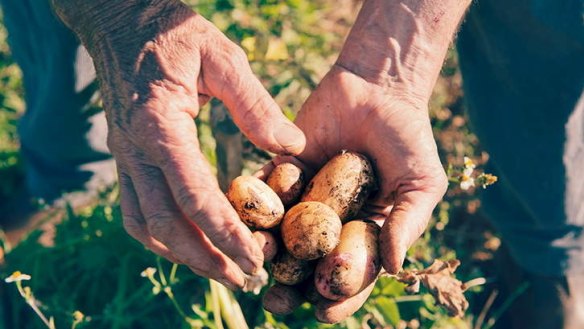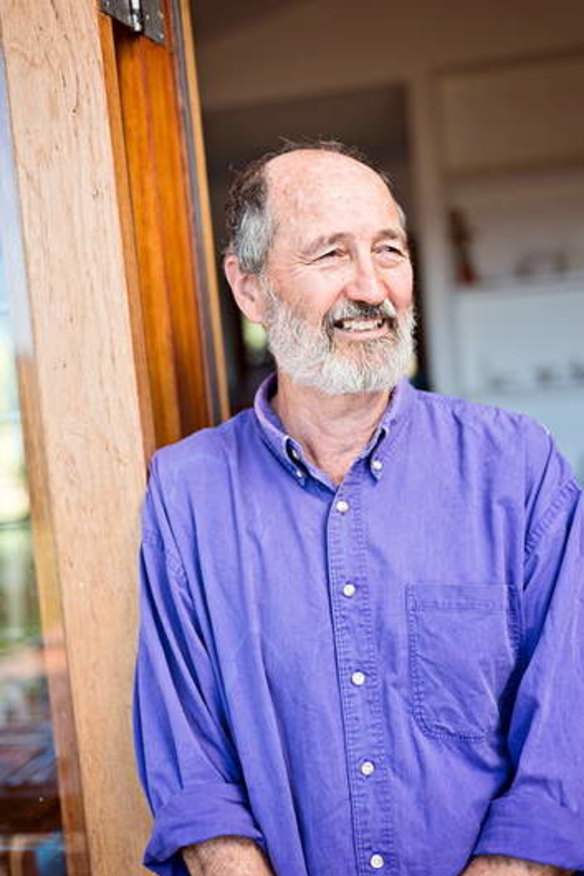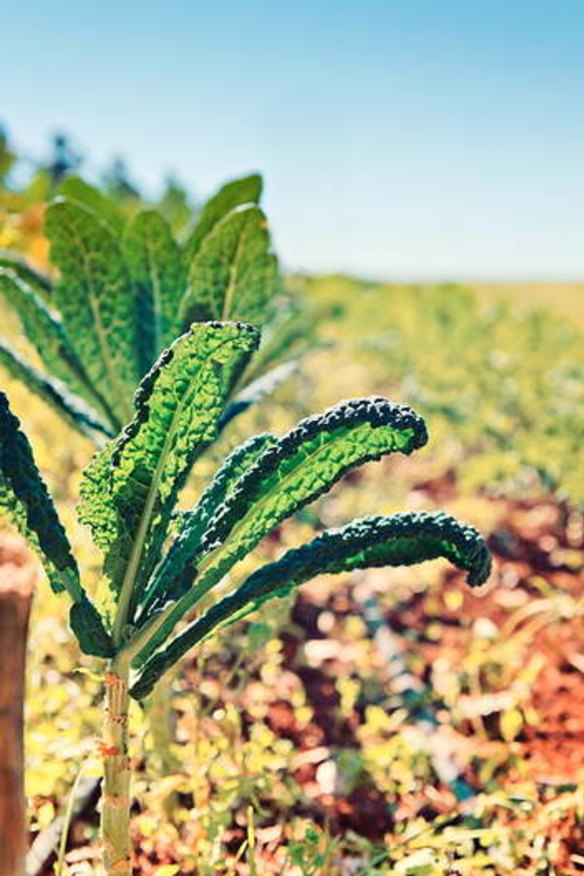Organic produce blooms for surfer-turned-farmer

Twenty years ago it was artichokes, but now it's the demand for kale that market gardener John Cutts can barely keep up with.
Cutts, who has always farmed organically, has been supplying chefs for almost two decades and has seen a fair few vegetables go in and out of fashion.
“When I started out we decided to plant globe artichokes, as there wasn't much around," says Cutts, who has a lush 8 hectares of red earth at Duranbah in northern NSW.

"I imported a seed from the UK that had no choke and started on a piece of land at Brookfield (in Brisbane's west) belonging to my neighbours.”
The seeds produced a bumper first crop and on the advice of a hospitality friend, who told him that E'cco's Philip Johnson and David Pugh from Restaurant Two would be "the only chefs in Brisbane who'd know what to do with an artichoke", Cutts duly made an appointment to see Johnson at E'cco.
“I went in and stood there while I watched Phil go through all the boxes that had been bought in by suppliers, rejecting produce because it was too small or not good enough and I thought 'how am I ever going to get past this guy?'.

:But then it was my turn and I opened the box and Phil's jaw just dropped. He was literally open-mouthed. He asked me how many I had and I told him I had about a thousand. From that day, we had hundreds of boxes going into E'cco, Restaurant Two, Harvey's and other restaurants."
Cutts, who grew up in the west of England made his first pound from growing vegetables at the tender age of 11.
“I was always interested in gardening and farming. My father was in the navy and away a lot so I spent a lot of time with my grandmother who had market gardens," he says.
"I started off growing runner beans. My mum had got some tips from my grandfather that she passed on and mine were really good, so I started selling them up and down the street.”
While he was drawn to working with the earth, Cutts was persuaded by well-meaning family and career advisers that farming would never make him any money and that the future lay in electronics.
“So that's what I did. I went off to study electronics but I only lasted four years. Then I went surfing for the next four.”
Cutts lived and surfed in mainland Spain, France and the Canary Islands. The experience changed his life, he says.
“That's when I came to understand and appreciate food. I was working on fishing boats and living off the fish that we caught and vegetables we got from the farm as well as fresh olive oil and sun-ripened tomatoes; things we just didn't get in the UK at the time. When we lived in south-west France we had no money to buy a lot of the high-quality produce but we used to look at it in the shop windows and restaurants.”
Cutts says he's always farmed organically. “It was just what we did, the word 'organic' wasn't even used when I started.” But when he moved from Brisbane to this former banana farm, he began the certification process.
“We had soil tests done and the lab in Melbourne said it was one of the cleanest farms they'd ever seen. Of course there is DDT here; there is DDT on the top of Uluru, but it's so low it's not a problem.”
The earth lay unplanted for a year while Cutts prepared it, mixing in more than 60 tonnes of compost to improve the soil's nutrition using a vintage piece of machinery called the Krone Optimat Dungflingen.
“It's so famous it even has its own YouTube video,” he laughs.
The farm was considered "in conversion" for another three years before receiving organic certification.
Today there's a strip between his farm and the non-organic banana farm next door that Cutts refers to as the "DMZ" (demilitarised zone) where nothing can be planted. Organic regulations insist on a minimum of 15 metres between an organic and non-organic farm.
Aside from a few more delicate lettuces, everything is grown in the open in neat rows, ploughed by Cutts and farm worker Jack with a 90-year-old "Planet Junior" - a hand-operated wheel hoe.
Almost everything grown is from old varieties, the seeds often imported from the US.
“The Americans are very concerned about food security and preserving old varieties, so they've invested a lot into breeding which is why I get a lot of my seeds from there,” he says.
Depending on the season, the beds are rotated and may be planted with broad beans, peas, four different types of potatoes, green and purple sprouting broccoli, pumpkin, edamame beans, rows of an ancient variety of savoy cabbage, a equally old type of zucchini from Sicily and a extra sweet type of pea and kale including a sweet, tender White Russian kale, which he grows exclusively and Cutts says probably originated in the Baltic states. And of course, he still grows plenty of those famous artichokes.
Philip Johnson-E'cco Bistro/Bistro One Eleven
Serve 6 as a side
- 10 anchovy fillets
- 2 cloves garlic, sliced
- 3 bunches kale, stems removed, well washed
- 75ml extra virgin olive oil
- 18 slices pancetta
- Freshly ground black pepper
Place anchovy, garlic and olive oil in a bowl and place over a pan of simmering water for 20 minutes until the anchovies are completely soft.
Blanch the kale in boiling salted water in batches, until tender. Refresh in iced water, drain then wring out any excess water. Roughly shred into 1cm pieces then set aside.
Preheat oven to 180C.
Spread the pancetta on a baking tray and bake for 5-6 minutes, or until crisp. Remove from the oven and set aside.
Heat a large frying pan over medium-high heat, use some of the olive oil from the anchovies to saute greens until well heated through. Season with black pepper, add the anchovy oil, toss through the kale. Transfer to a serving bowl, lay the pancetta over the top.
The best recipes from Australia's leading chefs straight to your inbox.
Sign up